Top 10 Must-Have Features in Modern Dental Website Design (2025 Edition)
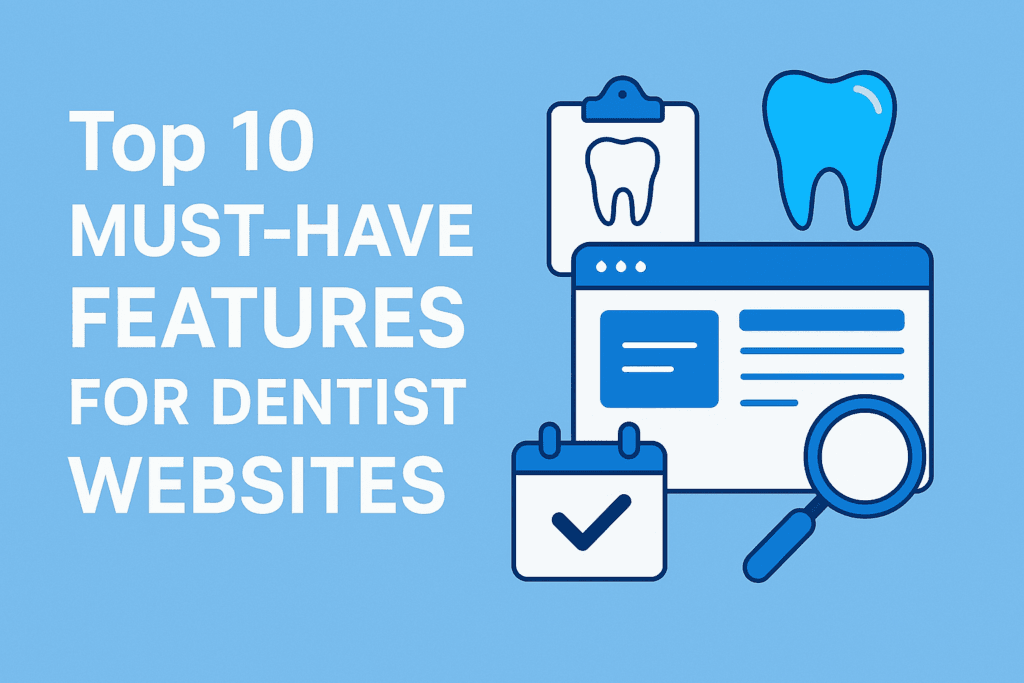
A dental clinic’s website in 2025 is more than just a digital brochure — it’s the heart of your practice’s online identity and a critical touchpoint for first impressions. With effective dental website design, you’re not just showcasing services; you’re building trust, improving patient engagement, and often making the difference between gaining or losing a patient.
Modern patients expect ease, trust, and speed. They judge your professionalism by your dental website design, compare you to competitors in seconds, and want instant access to bookings, reviews, and reassurance. If your site doesn’t deliver on those expectations, it’s not just outdated — it’s costing you real business.
So what defines an exceptional dental clinic website design in 2025? Below, we break down the ten most critical features that every modern dental practice website needs to stay competitive, convert leads, and grow sustainably.
1. Mobile-Responsive Design for All Devices
Over 80% of dental patients now search for clinics on their mobile phones — often while on the go or between errands. If your website isn’t designed to adapt instantly to mobile screens, you’re risking high bounce rates, poor user experiences, and lost appointments.
According to Google’s own mobile usability documentation, mobile responsiveness isn’t just a user experience priority — it’s a core ranking signal. Websites that fail to load properly on smartphones are actively penalised in search results.
Designing for mobile isn’t just about shrinking elements — it’s about restructuring your content for fast scanning and natural thumb movement. For example, placing essential information like your phone number or booking button within thumb reach can significantly reduce friction.
Collapsible menus, sticky headers, and swipe-friendly galleries are often overlooked but can dramatically enhance how users experience your dental site on mobile. Mobile-first doesn’t just benefit usability — it also encourages longer time spent on site, which supports your SEO and conversion rates.
A responsive dental website design adjusts seamlessly to smartphones, tablets, laptops, and desktops. Key benefits include:
- Clickable buttons without zooming
- Faster load times on 4G/5G networks
- Layouts that prioritise important content
- Boosted local SEO visibility
We’ve written extensively on the best responsive layout strategies in Top 10 Tips for Creating the Best Health Web Design in 2025, including how flexible grids and intuitive UX structures dramatically improve dental website conversion rates.
📍 Also consider the design expertise offered in our Custom Website Development services.

2. Online Booking Systems That Sync With Your Practice
Gone are the days when patients were happy to leave a voicemail. Today’s patient expects instant, 24/7 appointment booking via your website — especially after hours.
A truly patient-friendly online booking experience should offer intuitive navigation, instant feedback on availability, and clear steps throughout the process. If the system asks for too many fields or loads multiple screens, patients are more likely to abandon the booking.
Clinics should also consider segmenting services (e.g. new patient consults vs. routine cleans) to reduce confusion and guide users effectively. Bonus features like automatic waitlists or calendar sync can elevate the experience even more, making your clinic feel modern and well-organised.
An integrated online booking system, like HotDoc or HealthEngine, allows patients to:
- Choose their preferred time and date
- Select the service (e.g. clean, crown, Invisalign)
- Instantly receive confirmation via email or SMS
This feature transforms your site into a high-converting sales funnel, working even when your clinic is closed. And it’s not just about convenience — platforms like HotDoc have shown a 26% increase in appointment bookings after implementing real-time scheduling.
Our Appointment System Integration service ensures your booking engine connects smoothly with your existing practice management software (PMS), giving you less admin and more patients. Ensuring dental website design includes appointment system integration is vital for a clinics digital success.
You can learn more about our PMS consulting in Practice Management Software (PMS) Recommendations, especially if you’re using tools like Dental4Windows or Core Practice.
3. Blazing Fast Load Speeds and Technical Performance
Speed kills — or saves — your conversions. A delay of just one second in page load time can reduce conversion rates by up to 7%, according to Portent’s performance study.
Speed enhancements go beyond basic hosting choices — they also involve fine-tuning what loads, when. Using smart techniques like delaying the loading of non-essential scripts (e.g. live chat, tracking pixels) until after key visuals appear helps improve perceived speed.
Minifying CSS and JavaScript files can reduce load time by milliseconds that add up quickly across multiple sessions. It’s also worth considering how embedded maps, video players, or animations impact site speed — sometimes cleaner, lighter alternatives can improve user satisfaction without compromising function.
When it comes to dental clinic website design, technical performance matters for:
- User experience: nobody likes to wait
- Mobile SEO: Google uses load speed as a ranking factor
- Local discoverability: especially important in competitive suburbs
Run your current site through GTMetrix or Google PageSpeed Insights to identify lagging issues. You may be surprised to learn that uncompressed images, poor hosting, and third-party scripts are dragging you down.
That’s why our Hosting And Maintenance service includes high-speed Australian servers, image compression tools, uptime monitoring, and proactive caching.
If your site feels slow or unstable, check if it needs a refresh with Is It Time for a Website Overhaul? What Every Vet and Health Clinic Needs to Know
4. SEO-Optimised Site Structure and Local Keywords
It doesn’t matter how sleek your design is if patients can’t find you on Google. Every high-performing dental clinic website design needs SEO baked into the bones.
A strong dental website SEO strategy includes:
- Local keywords (e.g. “Dentist Chatswood”)
- Clean, semantic URLs (e.g.
/dental-checkups-northern-beaches) - Descriptive image alt-text
- Fast-loading mobile versions
- Keyword-optimised service pages
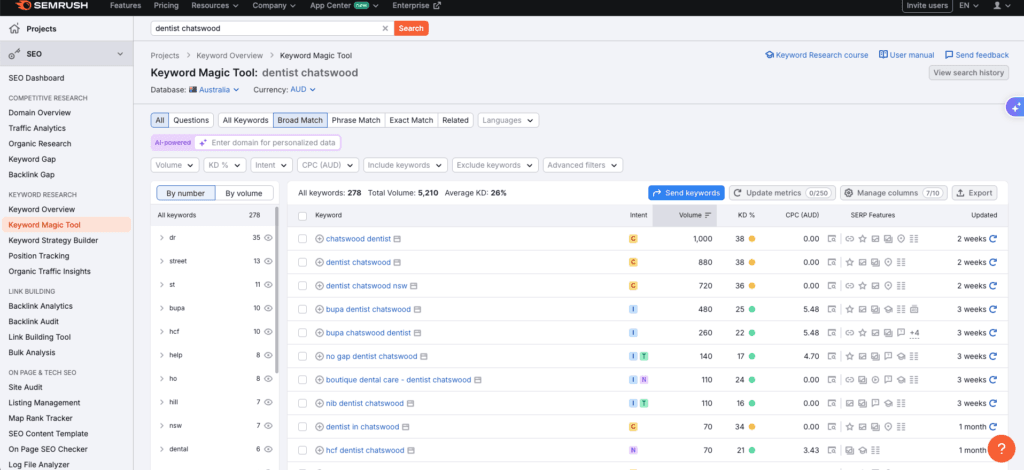
Read more on Moz’s local SEO framework to understand how search engines crawl and rank clinic websites.
Many dental clinics overlook the power of internal linking and topical clusters. By creating content “hubs” — such as a primary page about cosmetic dentistry supported by detailed sub-pages on whitening, veneers, and Invisalign — you establish topical authority. This structure helps search engines understand how your content is connected, while giving patients an easier path to explore related treatments.
At Total Care Digital, our dedicated SEO service (SEO) and SEO for Dentists: How to Attract More Local Patients to Your Clinic guide walks you through how we craft content and optimise backend architecture to help your clinic rise to the top of search results.
We also use tools like Ahrefs, SEMRush, and Google Search Console to monitor your site’s visibility and make data-driven improvements. These tools, when combined with a solid dental website design allow significant growth for a clinic’s digital presence.
5. Trust Signals That Inspire Confidence
Patients want proof — not promises.
Strong dental website design includes clear trust signals that eliminate doubts and show visitors they’re in safe hands. These include:
- Verified Google reviews
- Before-and-after images (with consent)
- Memberships (e.g. ADA, Invisalign Partner, CBHS)
- Patient video testimonials
- Professional accreditations
- COVID-19 safety protocols
Visual consistency plays a key role in reinforcing trust. Simple design cues like using the same staff uniforms in photos, maintaining a calm and clean colour palette, and presenting credentials in a tidy format all subtly convey professionalism.
Even the tone of your microcopy — the small bits of text in forms, buttons, and confirmation messages — can build confidence. Instead of just saying “submit,” try phrases like “Securely book my appointment” to signal that care has been taken with user experience and data safety.
A report by Healthgrades found that 71% of patients read reviews before booking a healthcare appointment.
Our Reputation Management service helps highlight glowing patient stories while flagging and resolving poor reviews to maintain trust and credibility.
We also go deep on this in Why Choosing the Right Web Developer in Sydney Matters for Your Vet or Health Clinic, because quality design and credibility go hand-in-hand.
6. Clear, Compelling Calls-to-Action (CTAs)
Your website needs to tell patients exactly what to do next — and make it easy to follow through.
Great CTAs:
- Use action verbs: “Book Now,” “Claim Your Gap-Free Check-Up”
- Appear above the fold, in sticky headers, and at the end of every page
- Lead to clear destinations (booking page, contact form, service page)
If your current CTAs are buried or vague, you’re leaving bookings on the table. Need examples? Check out these high-converting CTA layouts from Crazy Egg.
Context-sensitive CTAs convert better because they meet users where they are in the journey. A visitor on a dental implants page may be hesitant and need more education — a “See how it works” button might be more effective than “Book Now.” On the other hand, a returning patient on a contact page may just want a fast “Book My Appointment” option.
We help you map effective calls to action throughout the user journey in our Website Design and Development strategy sessions.
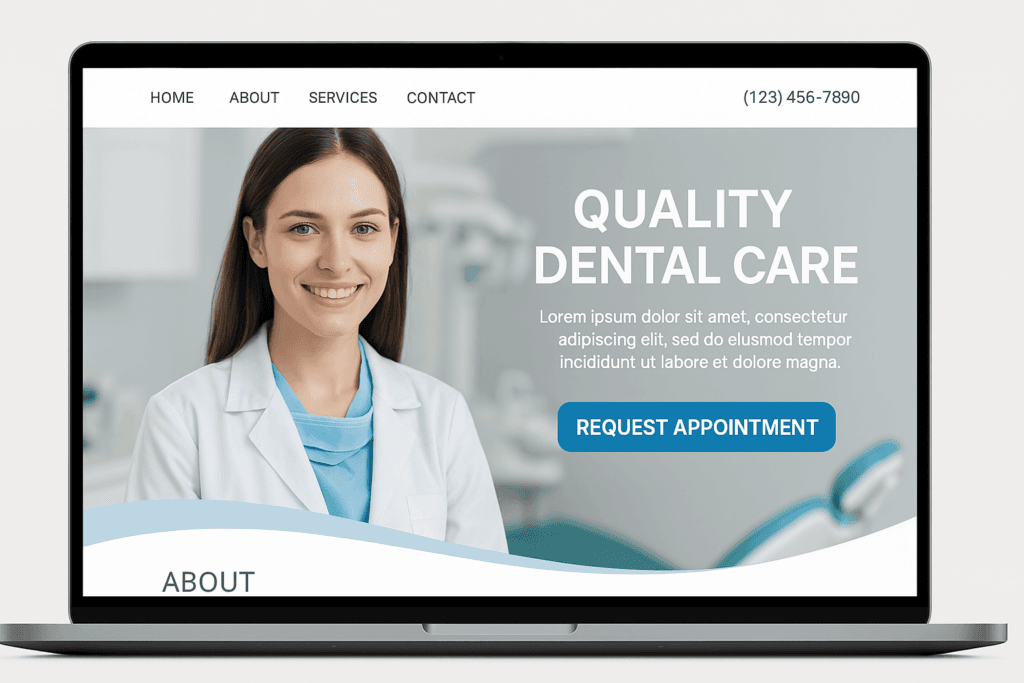
7. Service-Focused Content That Drives Engagement
Today’s dental websites are content engines, not static brochures.
Each page should:
- Educate patients
- Answer FAQs
- Build authority in your niche (e.g. cosmetic dentistry, family care)
- Improve local SEO rankings
A strong dental content strategy recognises that patients have different priorities. Some are cost-conscious, some fear pain, and others care about aesthetics — your content should address these different angles empathetically.
You can also enhance engagement with interactive content like quizzes (“Are you a good candidate for whitening?”) or cost estimators, which help users feel more involved and informed. Storytelling is another powerful tool — sharing a short success story or patient journey makes your services feel relatable, not clinical.
Great dental website content includes:
- Treatment explanations with diagrams and animations
- Preventive care guides
- Emergency dental tips
- Finance plan information
- Blog articles based on popular search queries
See how we turn content into bookings in Content Marketing and explore chatbot tools for patient engagement in Chatbot Integrations.
8. High-Security Hosting with Healthcare-Grade Protections
Dental websites handle sensitive data — so trust must extend to the backend. Your hosting must include:
- SSL encryption (HTTPS)
- Daily backups
- Uptime monitoring
- Australian servers (for latency and compliance)
- GDPR & optional HIPAA compliance (if storing health info)
Failure to secure patient contact forms or online bookings can result in legal exposure. Refer to HIPAA Journal for guidance on compliant web hosting for medical and dental practices.
When it comes to dental websites, security isn’t just about protecting data — it’s about maintaining uptime and reliability. Downtime during peak hours can lead to missed bookings and patient frustration. A robust hosting setup should include uptime guarantees, DDoS protection, and auto-scaling to handle traffic spikes (e.g. after a Facebook campaign).
Our Hosting And Maintenance service ensures healthcare-level protections, so you can focus on patients — not plugins.
9. Consistent Branding Across Pages and Channels
Great dental clinic website design is memorable and consistent — from your homepage to your Instagram feed.
Essential branding features include:
- Clean, clinical typography
- A soothing, consistent colour scheme
- High-quality staff photos (not stock!)
- Visual hierarchy that guides users through content
A strong brand doesn’t just look professional — it increases trust, recall, and conversion. Check out our design philosophy in Custom Website Development and explore the patient experience focus in our UI/UX service.
Branding goes deeper than logos and colours — it’s about the emotional experience your website evokes. Does it feel warm, clinical, family-focused, or boutique? Font choice, image style, tone of voice, and layout rhythm all communicate your clinic’s personality before a visitor even reads a full sentence.
It’s crucial to audit these visual cues regularly to ensure they match your current positioning. For example, clinics that now offer more cosmetic services may want to shift towards aspirational imagery and more premium-feeling design elements.
For real-world examples of how branding influences success, read Dental Web Design That Attracts New Patients: What Every Clinic Needs to Know.
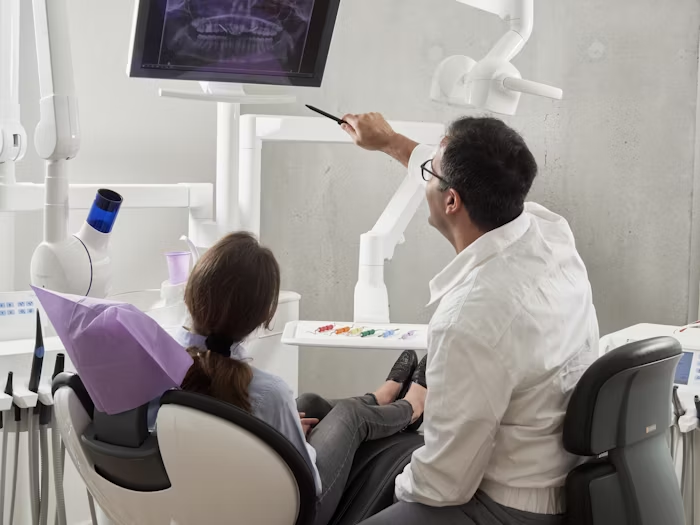
10. Analytics, Conversion Tracking, and Ongoing Optimisation
A “set and forget” mindset no longer works for dental website and dental website design. You must actively track:
- Which pages generate bookings
- Where visitors drop off
- What devices users are on
- SEO keyword rankings
- Facebook/Instagram ad performance
Real optimisation starts with asking the right questions. Are patients dropping off on your service pages? Is your homepage CTA being clicked, or ignored? Looking at heatmaps and scroll depth reports can reveal exactly how users interact with your layout.
Better yet, session recordings allow you to watch real user behaviour in action. These insights let you refine underperforming areas — whether that’s rewriting unclear text, moving CTAs higher, or simplifying a booking form — all based on evidence, not guesswork.
We install and manage tools like:
Get monthly insights tailored to your clinic with our Analytics And Tracking Setup.
Final Thoughts: Audit, Upgrade, and Grow in 2025
Every day, patients are making decisions about which dentist to trust — often based solely on what they see online. If your site isn’t performing at the level your care deserves, now’s the time to act.
- Request a free Digital Audit
- Explore our all-in-one Website Overhaul Services
- Reach out via our Contact
Your website should reflect the same level of care and professionalism you offer in your clinic. A few small changes could make a big difference in how patients find and choose you — and we’re here to help you make it happen.
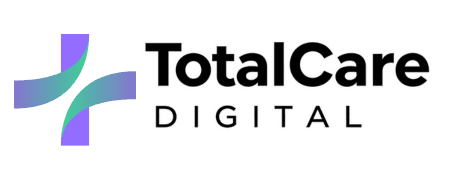


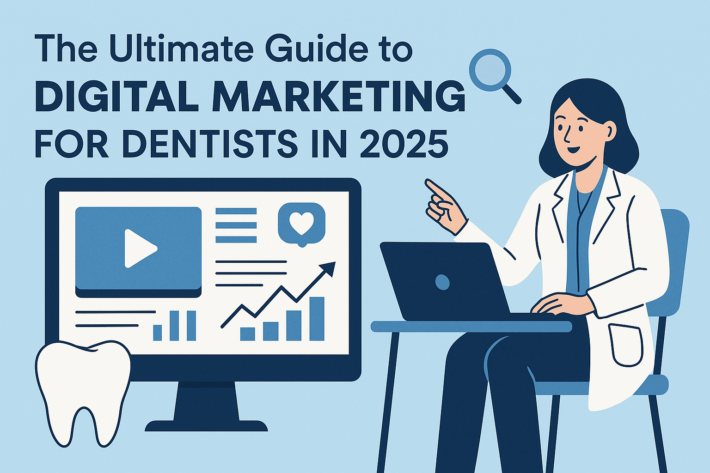
[…] it: Prioritise UI/UX focused on patient-friendly journeys. Review our Top 10 Must-Have Features in Modern Dental Website Design (2025 Edition) for practical design inclusions. Test your site with real patients to uncover hidden friction […]